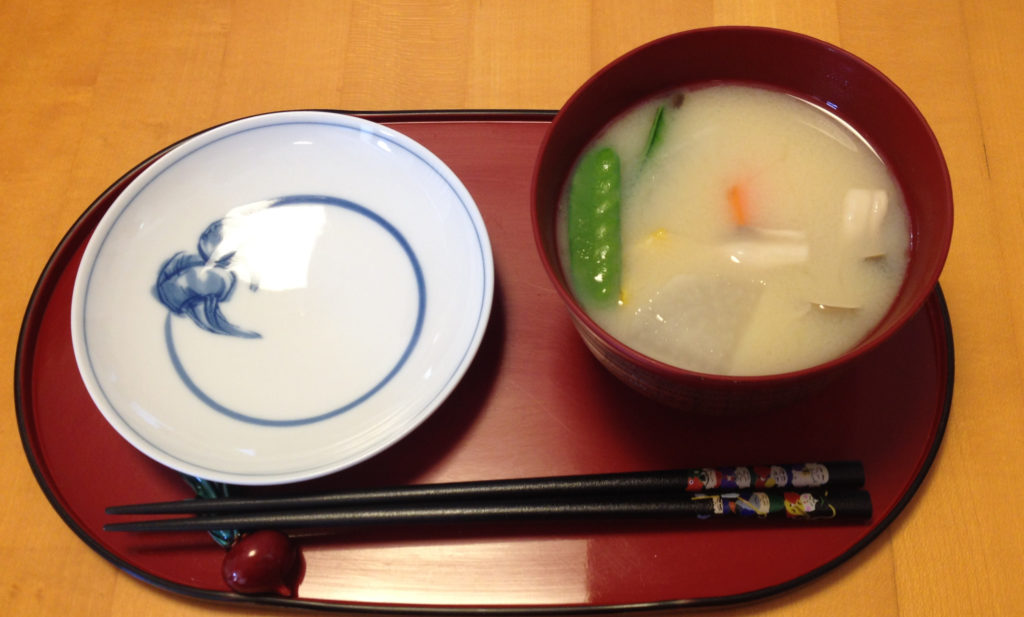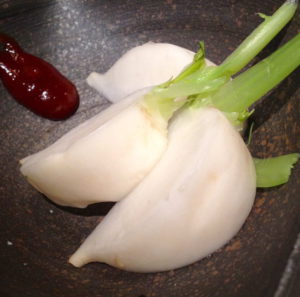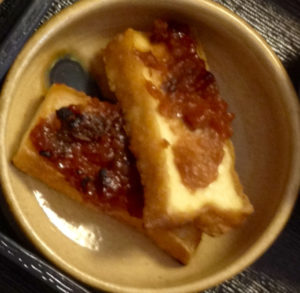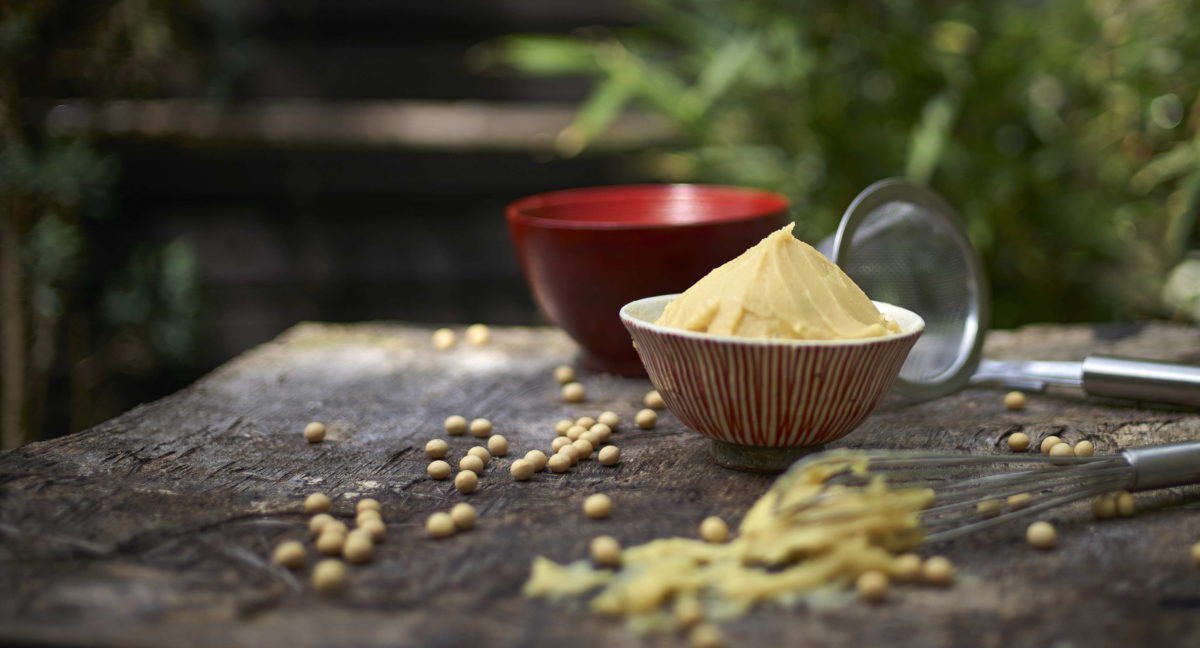A steaming bowl of miso soup – for the most Japanese a piece of home and the essence of nourishment. A steaming bowl of evoking memories of childhood, family and tradition. It is likely that the number of ‘traditional’ miso soups equals the number of families in Japan and every sip of that soup functions like a time machine back into mom’s kitchen. So the ‘traditional’ miso soup is not only a nutritional powerhouse, but also full to the brim with taste and emotional memories.

Miso is one of the two major elements in miso soup, but it is certainly not the only use for this super food. Miso is an essential staple in the Japanese diet and is widely used in preparing dips and sauces, marinades (take a look here for a recipe) or in pickling and it also lends its flavor to wonderful deserts. Even though miso is so versatile, it happens that a pack is sitting in the fridge longer than aroma-wise beneficial (yes, you should keep your miso in the fridge to slow down deterioration). So what to do which ‘old’ miso? Throw it out? Of course not, because nothing goes to waste in the Japanese kitchen!
Here and now is not the time and place for an extensive, scientific essay on miso that has filled hundreds of pages in various books (see the link to a free download below)*. But generally speaking miso is a fermented food product with the fermentation process itself having the potential to function as a natural preservative. Miso also contains quite an amount of salt that acts as a natural preservative. So all in all, miso can be kept for a long time. It will not go bad easily, but once opened it will loose its aroma rather quickly. So when you tend to use more than one type of miso or don’t use miso on a daily basis you’ll be likely to end up with some miso sitting in your fridge longer than two weeks. For me personally two weeks is about the cut off date for the aroma, but that is personal preference. I do know people that consider four weeks to be ok for them. Test it and trust your taste to find out what works best for you.

Whenever you find your miso has become old, it is time to rejuvenate it. Add some aromas and some dashi to create a wonderful sauce that works as good as a dip for fresh vegetables (e.g. cucumber, celery) as it does as a scalloped topping on tofu or wheat gluten or even thinned with dashi as a sauce to pan-fried vegetables. Miso prepared this way is called neri miso and means ‘stirred miso’. It is usually made from red miso (aka miso), though i have successfully experimented with all kinds of miso. Today’s recipe is a basic version of this sauce. Stay tuned for more options how to further pimp neri miso with herbs and nuts in the coming weeks.
Ingredients for one jar (ca. 125 ml)
- ca 100 g red miso
- 20-30 g sugar
- 30-50 ml sake
- 30-50 ml water or (kombu) dashi
Method
Miso varies widely in consistency, flavor and saltiness, so the measurements for sake, sugar and water/dashi are guidelines only. When making neri miso start by using the lowest quantities and adjust consistency and taste to your liking, should it be necessary.

Combine all the ingredients in a pot and mix them until they are blended well. If you have, use a deep pot, because the sauce tends to splatter. Reduce the sauce on medium heat, stirring constantly (!) until the consistency is creamy again. Don’t be tempted to reduce it too much, because neri miso will thicken in the cooling down process, so take this into consideration. Now is a good time to carefully (it is very hot!) taste your neri miso and adjust the flavor. Let the neri miso cool down and fill it in a clean and disinfected jar.
________________
* Tip:
- Add ginger juice while the neri miso cools down for a quick twist on the basic recipe
- If you want to dive deeper into the history, the science, nutrition of miso, you may be interested in the free pdf-download of the ‘Book of Miso’ by William Shurtleff & Akiko Aoyagi
